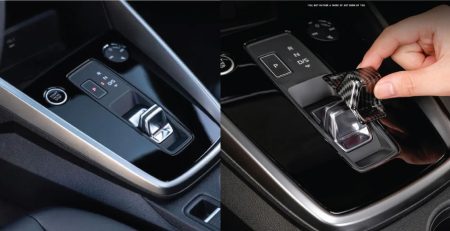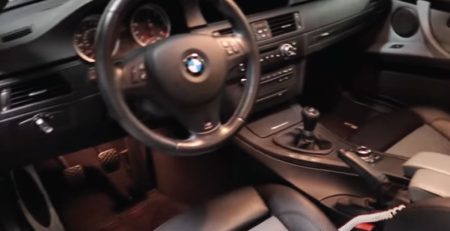Do You Know When Is The Appropriate Time To Replace Your Car Brake Fluid?
There is a lot of conflicting information between repair shops and car makers about how often brake fluid should be replaced or whether it should be changed. We have shed some light on the subject and make our recommendations.
Changing the brake fluid of a vehicle is probably not at the top of anyone’s mind when it comes to automotive maintenance items. But it should be, because it has important reasons. We’ll look at conflicting information about how often you should change the brake fluid in this article. We’ll tell you why it’s important and give you our best recommendations. In the end, you’ll make a decision, but you’ll know more about why.
If you’ve totally overlooked the service of brake fluid until now, that’s understandable. It is often tucked in as a footnote on your owner’s manual maintenance pages. And if your vehicle rolled off the assembly line in the last several years, it might not even be mentioned at all. On this note, we’ll mention a trend we’ve noticed lately among automakers regarding brake fluid.
Automakers Have Changed Their Tune on Brake Fluid Maintenance
We’ll start by looking back when in the 1990’s anti-lock brake systems (ABS) became standard vehicle equipment in all price ranges. Many car manufacturers began to specify a firm maintenance requirement for the brake system to be flushed with new fluid every 2 years -regardless of miles. This was mostly the norm for a while – going unquestioned because engineers who first tested and developed your vehicle for years had the best idea of what maintenance items were needed. For a good reason, everything specified was done so.
The time interval was (and is) the important factor, since brake fluid naturally absorbs moisture from the outside air over time, no matter how much or how little you drive. We’ll learn how bad this is further in the article, but in short, it can greatly reduce the ability to break and cause sensitive brake and ABS components to corrosion.
For two simple reasons, other items such as synthetic motor oil and coolant have become popular with car manufacturers – they perform better and last longer. Longer service life means that maintenance intervals can be extended with more miles or more time between them. This creates a lower overall ownership cost, which is more attractive for potential buyers to watch every penny – especially as car loans extending to 6, 7, even 8 years become more common. Although synthetic brake fluid (DOT 5 silicone) exists, it is not recommended for use in anti-lock braking systems.
In fact, the brake fluid available today for mainstream automotive use is still the same product based on glycerol that it has always been. It is still “hygroscopic”-it naturally absorbs approximately 1.5 to 3 percent water per year in areas of normal atmospheric pressure. This rate can rise even higher in humid climates. Moisture in brake hoses, seams, joints and seals will always find its way into the lines through microscopic pores-there is simply no way to avoid it.
Some of the same car manufacturers who strongly recommended flushes every 2 years switched to 3-year intervals, while others no longer mention it. They may have concluded that there is no need for brake fluid flushes every 2 years. But when you consider that water content level of brake fluid can reach 6% to 8% in the third year of service, such reasoning seems hollow.
However, we suspect the stretch is due to the fact that many automakers now provide free maintenance for the first 2 to 3 services. Stretching a brake fluid change out to the 3-year mark puts it just outside of the covered period, so the customer now pays for it instead. And if there’s no free maintenance plan, stretching brake fluid to 3 years results in lower cost of ownership numbers.
Considering all that was once taught on the subject, we’re inclined to recommend replacing brake fluid every 2 years if you live in a climate when any portion of the year has high humidity levels. If you’re in a dry desert climate, we suggest checking the water content of your brake fluid with a brake fluid tester (see below) at 2 years, and flush it if the level is 4% or higher.
Do You Need A Shifter for A Specific Car Such As a Mitsubishi Mirage? You Came To The Right Place! Click on the product image below to purchase the item So You Can Receive FREE SHIPPING!
Is There An Easy Way To Tell If I Need A Brake Fluid Flush?
A brake fluid tester is a useful tool for monitoring the condition of your brake fluid, as it detects and reports the absorbed percentage of moisture. Once you have a tester, you won’t have to ask if a dealer or other shop is trying to recommend a brake flush.
Why Clean Brake Fluid Is Important
Its boiling point begins to drop to a lower and lower temperature as the brake fluid takes on water. This can be problematic, because the heat radiating from pads and rotors can make brake fluid pretty hot in the hoses and lines.
Brake fluid does not compress in normal liquid form. For this reason, pressure is consistently and uniformly transferred throughout the system. But if brake fluid boils, it changes into a gaseous state and aerates into bubbles which do compress -leaving a squishy-feeling pedal and reduced stopping power. Regular maintenance of the brake fluid prevents this gradual decline in the braking system’s efficiency.
It’s also important to note that corrosion of metal brake lines and moving parts such as calipers and master cylinder pistons can and will occur eventually if moisture in old brake fluid builds to a significant point. These metal parts can corrode from the inside. A brake line, which fails, can lead to partial or complete brake failure.
Great corrosion on the surface of parts causes seals to wear and leak and causes calipers to bind to the point where the brakes are no longer effectively applied or released. Another important reason to regularly perform brake fluid flushes is to prevent corrosion of expensive brake system components.
Opportune Times to Replace Brake Fluid
Although we believe in the regularly scheduled brake flush interval, we also recognize that it is an additional cost. With this in mind, we are always looking for any opportunity to save a couple of dollars, and one way to do this is to combine related service and repair work.
Disc brake pads and rotors often need to be replaced. Although their replacement normally does not involve the opening of the hydraulic system, the vehicle is at least on a lift with its wheels and tires off. Asking the shop to flush the brake fluid at the time saves a few pennies.
If you need a replacement for the caliper, the system must be bled anyway. Caliper work is a much better time to flush and refill the entire brake system at minimally increased costs alongside the caliper work.
About The Brake Fluid Service Itself
A proper “flush” is required to remove all old brake fluid thoroughly. Pressure is created in the system during a flush that pushes the old fluid out as the new fluid takes its place. This pressure can be created manually by pumping the brake pedal with a second person or using a hand – pump pressure bleeder. Professional shops often rely on power flush machines (such as the Symtech Brake Flush Assistant) and charge the cost of new fluid for their work.
Power or manual pressure bleeders fit over the reservoir of the brake fluid and are secured in place with the use of adapter parts. When the pressure and new fluid is added, the old brake fluid is removed by loosening and tightening the bleeder screws on each wheel brake caliper.









